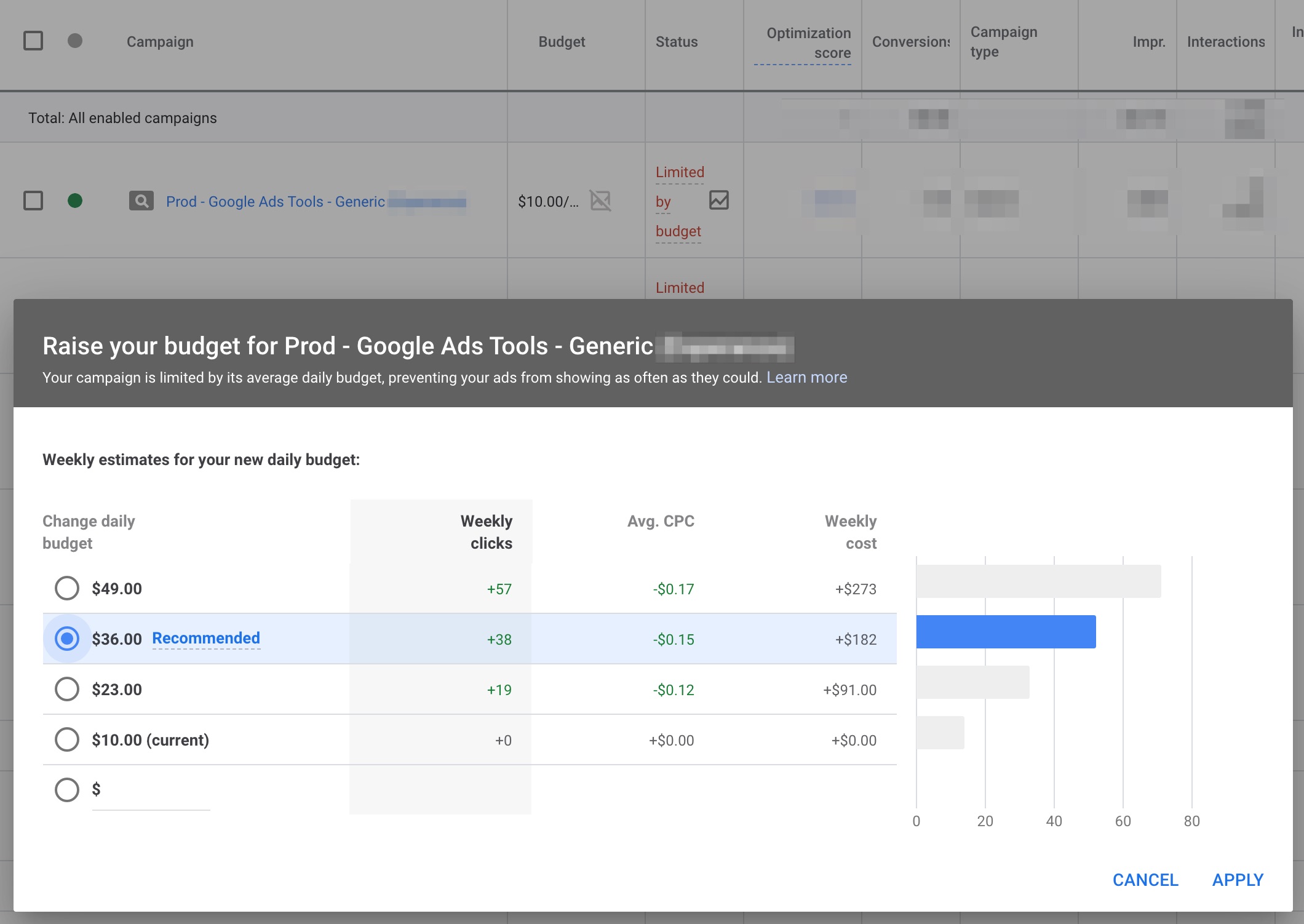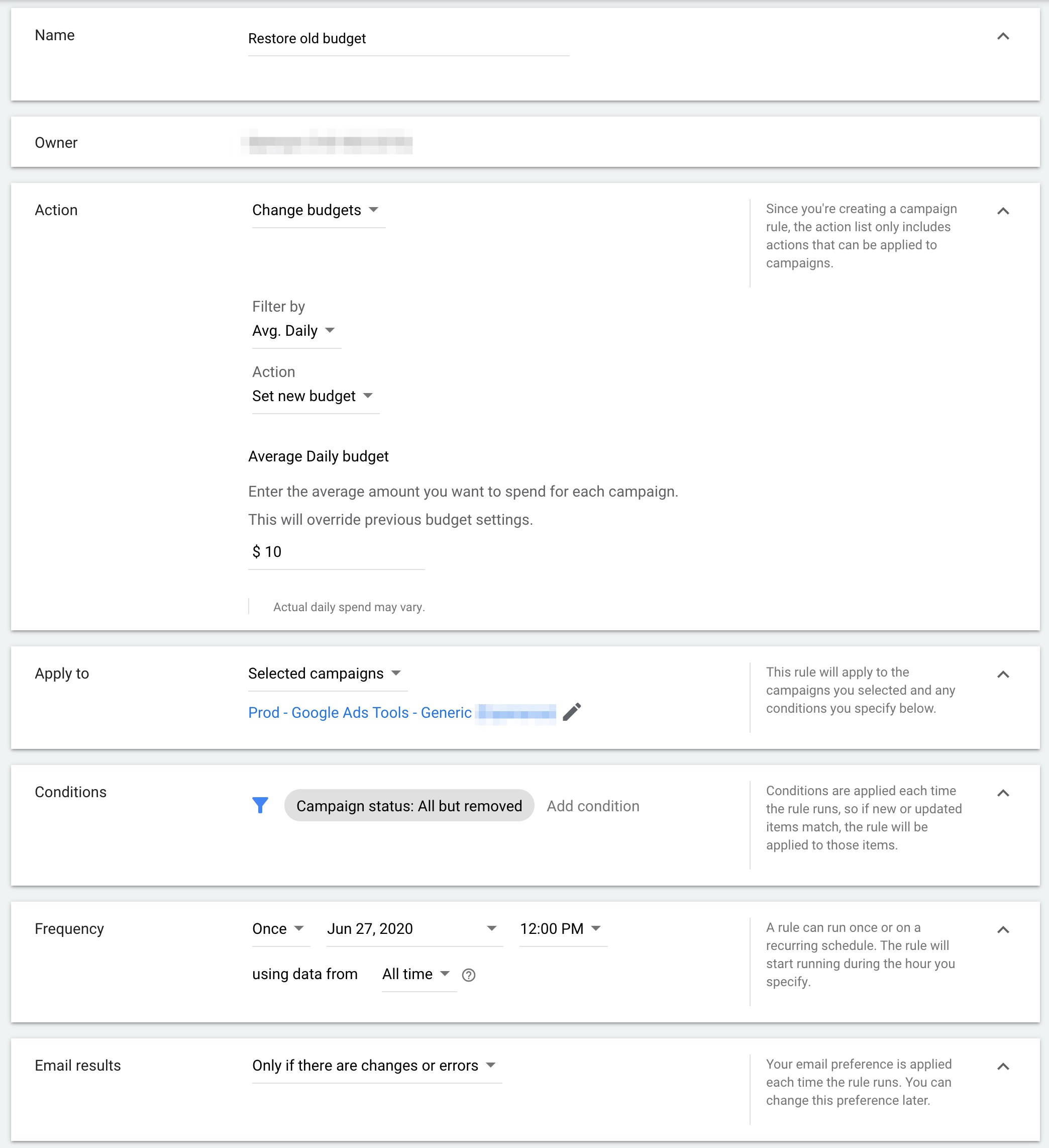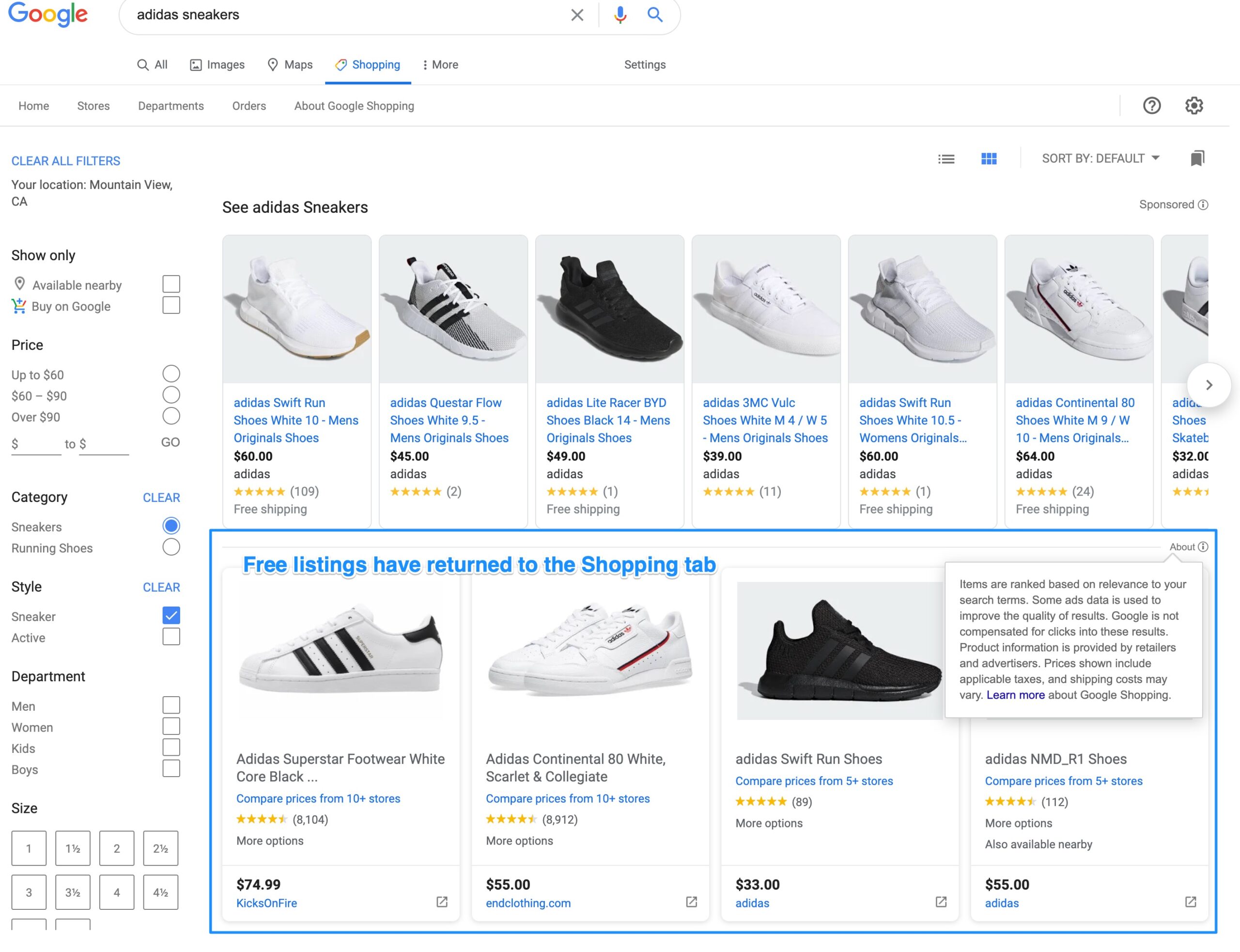Google issued ad credits as part of their COVID-19 relief effort.
If your account qualified and you recently got the credit, what are some good ways to use it?
I’ll share a prioritized list of ideas, along with tips on how to turn a temporary gain of some free money into a long-term proven way to get more from your investment in Google Ads.
Priority 1: Get 100% of What Works for You
During uncertain times, it’s wise to focus limited resources on things that have already been proven.
So if you have Google Ads campaigns that were delivering the results you wanted before, get more of that with your free money from Google.
The easiest place to start is to make sure you are not losing Impression Share due to budget for campaigns that are meeting your targets.
And just as a reminder, a budget optimization even applies to campaigns that are automated with Smart Bidding or Smart Campaigns.
Remember that automation in PPC doesn’t mean set-it-and-forget-it so don’t overlook opportunities for automated campaign types.
Here’s how to get 100% of what drives profitable sales and leads:
- Filter campaigns so you are left only with those meeting your targets for CPA or ROAS.
- Sort the remaining campaigns from best to worst CPA or ROAS.
- Now go down that list and make sure “Search lost impression share (budget)” is a low number.
- If Lost IS due to budget is high, refer to the status column and use the “Budget Explorer” to estimate the additional traffic you could get with different budgets.
- Increase the budget if you like what the Budget Explorer forecasts.
 The Google Ads Budget Explorer shows the difference in performance by changing the budget
The Google Ads Budget Explorer shows the difference in performance by changing the budgetIf you only want to increase budgets until you’ve spent your ad credits, divide the ad credit by the amount you increased daily budgets and set yourself a reminder to restore the previous budget levels after that many days.
Approximate days until budgets should be set back to old levels
=
Amount of ad credit / Amount of daily budget increase
Better yet, create an automated rule that will change the average daily budget back to the old amount on the day when your ad credits are supposed to run out.
 An automated rule in Google Ads can be set up to restore the previous budget setting on a specified future date
An automated rule in Google Ads can be set up to restore the previous budget setting on a specified future dateHopefully, you’ll drive enough new leads and sales to convince your stakeholders to permanently increase budgets.
But even if they don’t want to continue spending at these new levels, consider doing the same optimization I just covered by shifting budgets away from campaigns with lower performance.
So for every dollar added to the daily budget of a well-performing campaign, remove a dollar from the daily budget of an underperforming campaign.
Overall account performance should improve when you do this.
If your client is budget sensitive, be sure to use a tool or an ad script to help you stay within the allotted budget for your client or company.
Priority 2: Try Something Different
If you’re already capturing most of the Impression Share for your campaigns, the ad credits can be useful to test a new strategy on an existing campaign.
The goal here is to spend the extra money from the credits on a slightly more aggressive strategy, one that you may have been reluctant to test with your own money.
A more aggressive strategy may lead to discovering new pockets of valuable traffic that you can continue to benefit from long after your credits run out.
Here are ways to target growth for existing campaigns:
- Increase geotargeting.
- Increase CPC or target CPA.
- Decrease target ROAS.
- Add query coverage with looser match types.
- Test responsive ad formats.
The first three amount to relatively quick settings you can change.
The last two require a bit more work but are still relatively quick compared to creating an entirely new campaign.
More aggressive bids allow Google to show your ads for a larger set of search terms (the change in bid causes a change in query mix).
Looser match types achieve a similar change in query mix.
Adding responsive ad formats, somewhat counterintuitively, also lead to incremental gains to leads and sales because they help Google achieve a higher Quality Score for search terms where expanded text ads weren’t relevant enough.
As a result, responsive ads can increase ad rank and make your ads eligible to show on queries that were unattainable with a lower rank.
Priority 3: Try Something New
The third way I recommend using the ad credits is to test something entirely new.
If you’re already capturing all the impressions for profitable campaigns, and you’ve exhausted your immediate options for optimizing them, try something entirely new.
It can be a great way to use Google’s money to test something your boss or client never even considered.
Unlike tweaking existing campaigns, this strategy requires new campaigns that may take a bit more time to set up correctly.
New campaign types you can try:
The amount of the credits Google is issuing is limited so you’ll have to be focused.
Use it in a way that delivers enough data to make a decision on whether to continue running the new strategy with your own money after the ad credits are depleted.
This means you should keep your efforts pretty focused, even with a new campaign type.
Dynamic search ads are the easiest to try.
They can be set up as a campaign or a new ad group that automatically finds relevant queries for pages on your website.
Google handles the targeting and part of the ad text, and with automatic bidding, they’ll also handle bids.
Shopping ads are an absolute must for retailers.
Thanks to their engaging format and the inclusion of a price, they are responsible for 63% of paid search clicks for retailers in the U.S., according to Merkle.
As an added benefit, Google is now offering some free listings on their shopping search pages to any company that has their data in Merchant Center and who have enabled their products to be shown across all surfaces on Google.
 Retailers who submit their product data to the Merchant Center and enable all surfaces across Google can get free listings on the Google Shopping tab
Retailers who submit their product data to the Merchant Center and enable all surfaces across Google can get free listings on the Google Shopping tabFinally, consider a YouTube video ads campaign focused on performance.
You could start with an in-stream ad format, with a goal to get sales and leads for your site.
Not having any video ads is no longer an excuse not to try video ads since YouTube recently launched a free and easier way to create video ads, called the Video Builder.
A recent PPC Town Hall with video ad experts Cory Henke and Joe Martinez covered several tips related to video advertising.
Try It with an Experiment
If you’re using the ad credits to try something new or different, make sure you come away with reliable results about the performance of what you tried.
If you’re creating an entirely new type of campaign, the results of that campaign relative to your other campaigns will be your main indicator of whether it makes sense to keep the new campaigns turned on when your own money is at stake.
But if you’re testing something new in an existing campaign, don’t rely on before-and-after metrics to make a decision about how well the test went.
PPC is too volatile, especially now, to make a decision based on test data where you don’t have a control group.
The better way to get reliable data is to use Drafts and Experiments where you can split test your results.
I recently shared some ideas and a script for running better experiments on Google Ads.
Conclusion
Usually, we only get free ad credits when we test a new ad platform for the first time.
But Google Ads has evolved quite a bit since most of us started using it so it’s almost like a new platform.
Along the way of Google Ads’ evolution, we may have skipped trying some new capabilities because we couldn’t justify the potential cost if the experiment didn’t go well.
But thanks to the COVID-19 relief ad credits Google has issued, we now have some free money in our accounts to test new strategies.
Clearly, Google will benefit from us discovering new things that work well, but in the end, we will benefit too so it’s worth putting that free money to good use.
More Resources:
- How to Conduct a Complete Google Ads Audit
- 8 Simple Google Ads Tips That Will Make You More Money
- 8 Ways You’re Doing Google Ads Wrong & How to Make It Right
Image Credits
All screenshots taken by author, June 2020




